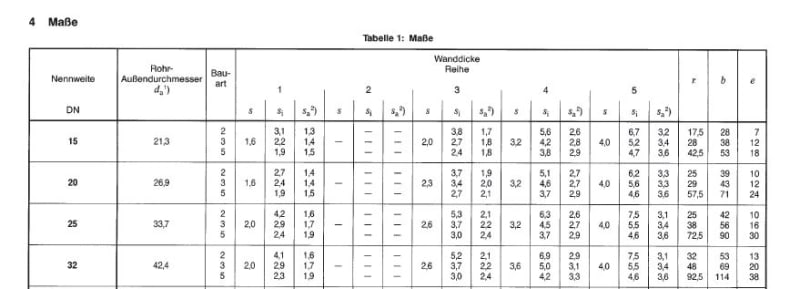AchillesC
Mechanical
- Jun 9, 2021
- 1
Hi forum, i need an assistance for reading elbow din dimensions sheet.
Example: if DN15 exist with 1,6 2,0 3,2 and 0,4 wall thickness, what is the right Radius for each: 17,5 28,0 or 42,5??
 Thanks
Thanks
Example: if DN15 exist with 1,6 2,0 3,2 and 0,4 wall thickness, what is the right Radius for each: 17,5 28,0 or 42,5??



